Poster design, c. 1899.
Elsewhere on { feuilleton }
• The gay artists archive
A journal by artist and designer John Coulthart.
Art
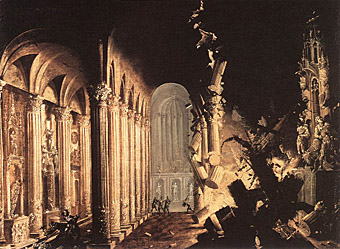
Explosion in a Church.
“Enigma” or “mystery” are the words usually associated with “Desiderio” (or even “Monsù Desiderio”), due to years of misattribution that made two obscure painters of the same period with similar styles appear to be a single artist.
Until some fifty years ago, the identity of François de Nomé (ca. 1593–after 1634) was hidden by confusion with another contemporary painter from the Lorraine, Didier Barra (called “Monsù Desiderio”), whose work was at times disturbingly similar. In the 1930s, when the Surrealists were searching for forerunners, there was a revival of interest in Nomé, a painter most noted for fantastic architectures, eerily lit night scenes of the ruins of cities, and of catastrophic visions. He has continued to fascinate the modern mind for fifty years.
Jean Hippolyte Flandrin (1809-1864) was a Neo-Classical painter whose work tends to lack the sensuality of his master, Ingres, yet who managed to produce one picture at least which has been an inspiration to subsequent artists and photographers.
Jeune Homme Assis au Bord de la Mer (Young Man Sitting by the Seashore) was painted in 1836. The simplicity and directness of the rendering is probably intended to be reminiscent of Classical sculpture and the figures seen on Greek pottery and bas-reliefs. There’s nothing in Flandrin’s history to suggest a homoerotic intent but the picture has that effect nonetheless, and it’s to gay artists (and viewers) that the work has mostly appealed since, as can be seen below.
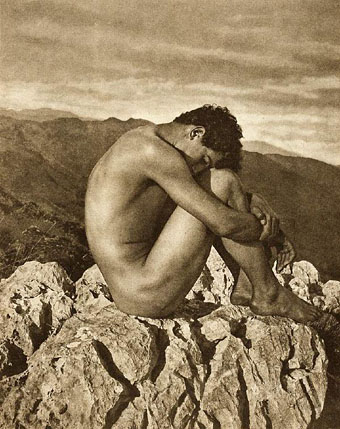
The first (?) copy, usually dated as being from 1900 although it may be earlier, and a very careful imitation of the original pose. Photographer Wilhelm von Gloeden specialised in Classical-themed gay erotica and gave his figure a Biblical allusion by titling the picture Cain. Gloeden’s follower, Gaetano d’Agata, produced his own version.
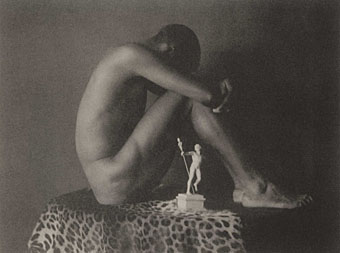
Ebony and Ivory (1897) by Fred Holland Day.
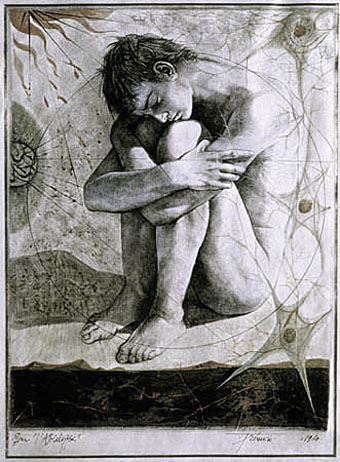
L’Apocalypse by Pierre Yves Trémois (1961).
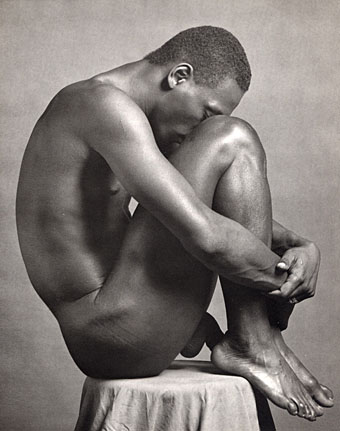
Ajitto by Robert Mapplethorpe (1981).
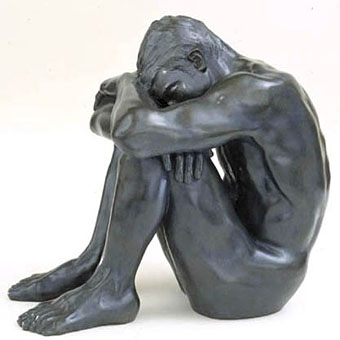
A rare sculpture version, L’Homme de l’Apocalypse by Pierre Yves Trémois (1998).
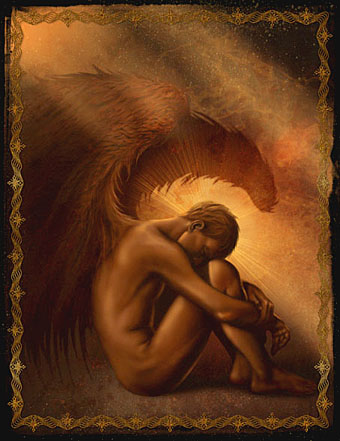
Finally, here’s my own Fallen Angel picture from 2004 which added wings to the figure.
Elsewhere on { feuilleton }
• The recurrent pose archive
• The gay artists archive
Still-life with a skull (vanitas) by Philippe de Champaigne.
vanitas
think of the scene from shakespeare’s hamlet where the prince holds a skull of yorick, a former servant, bemoaning the pointlessness and temporary nature of worldly matters. certain themes characteristic of a specific philosophy have been commonly represented during an era, and an iconography has been developed to express them. an example is the still life vanitas vanitatum of the middle ages, a reminder of the transitory quality of earthly pleasure symbolized by a skull. pictorial arrangements are dealing with the vanity of the intellectual world (globe, books), and of the ‘vita voluptaria’ (musical instruments, smoking implements). often painters continued the old tradition of including appropriate captions or texts on their pictures. the favourite was the admonition from ecclesiastes I: ‘vanity of vanities; all is vanity’. the transience of human existence is often brought out also by other symbols like the candle and the hourglass.
Elsewhere on { feuilleton }
• The etching and engraving archive